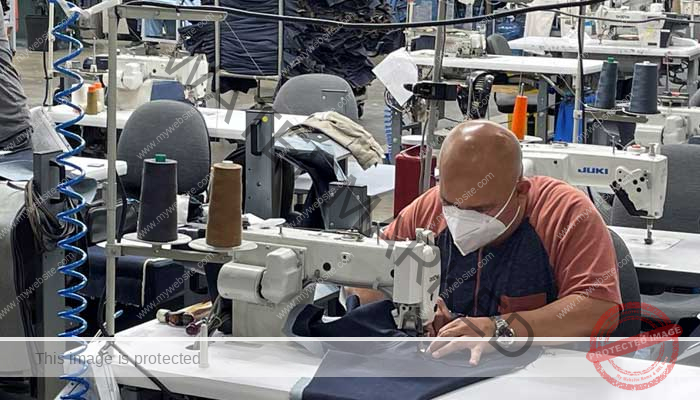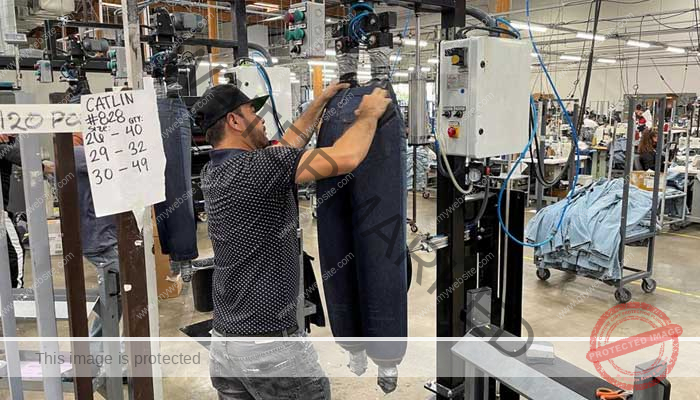Will your blue jeans ever be made by a robot?
“Clothing is the last trillion-dollar industry that hasn’t been automated,” stated Eugen Solowjow, who heads a project at a Siemens lab in San Francisco that has worked on automating apparel manufacturing since 2018. “There is a quiet effort underway to find out.” It involves clothing and technology companies, including Germany’s Siemens and Levi Strauss & Co.
During the pandemic, as clogged supply chains highlighted the risks of relying on distant factories, the idea of using robots to bring more manufacturing back from overseas gained momentum.
More clothing manufacturing could relocate back to Western consumer markets, including the United States, if handwork could be eliminated in China and Bangladesh. However, that is a delicate subject.

Because of concerns that workers in developing nations will suffer, many apparel manufacturers are reluctant to discuss the pursuit of automation. According to Jonathan Zornow, who has developed a method to automate some aspects of jeans factories, he has received online criticism as well as one death threat.
Levi’s spokesperson stated that he could confirm the company’s involvement in the project’s early stages, but declined further information.
The floppy cloth problem
Automation is particularly difficult when sewing.
The cloth is floppy and comes in an infinite variety of thicknesses and textures, in contrast to a car bumper or a plastic bottle, which retains its shape as a robot handles it. Simply put, robots lack the dexterity of human hands. According to five researchers who were interviewed by Reuters, although robots are getting better, it will take years for their ability to handle fabric to be fully developed.

However, what if enough of it could be automated to at least close the cost gap between American and low-cost foreign factories? That is the primary focus of the current research project.
According to Solowjow, efforts to develop software to guide robots that could handle all kinds of flexible materials, such as thin wire cables, led to work at Siemens. Soon, they realized that clothing was one of the best targets. Statista, an independent data platform, estimates that there is a $1.52 trillion global apparel market.
In order to assist traditional manufacturers in making use of the new technology, Siemens collaborated with the Advanced Robotics for Manufacturing Institute in Pittsburgh, which was established in 2017 and received funding from the Department of Defense. They found a San Francisco startup with a promising solution to the problem of floppy fabric. The startup Sewbo Inc. uses chemicals to stiffen the fabric so that it can be handled more like a car bumper during production rather than teaching robots how to handle cloth. The stiffening agent is removed from the finished garment by washing it.
According to Zornow, the inventor of the Sewbo, “This fits into the existing production system because pretty much every piece of denim is washed after it’s made anyway.”
Enlisting robots
This research project eventually grew to include Levi’s and Bluewater Defense LLC, a small US manufacturer of military uniforms, among other clothing companies. The Pittsburgh Robotics Institute provided them with grants totaling $1.5 million to test the method.
Sewing factories are being automated in other ways. A Georgia-based startup called Software Automation Inc. has created a machine that can sew T-shirts by pulling the fabric over a specially designed table, for example.

Bluewater Defense’s CEO, Eric Spackey, participated in the research effort with Siemens but is skeptical of the Sewbo strategy. According to Spackey, “putting (stiffening) material into the garment—it just adds another process,” which raises costs. However, he adds that it might make sense for producers, such as jeans manufacturers, who already wash garments as part of their normal operation.
The initial step is getting robots into dress production lines.
After studying the Sewbo machines, Sanjeev Bahl, who opened Saitex, a small jeans factory in downtown Los Angeles, is getting ready to install his first experimental machine.
In September, as he led people through his factory, he said that many of the tasks are ripe for the new process and pointed to workers who were hunched over old machines.
“In the event that it works,” he said, “I believe there’s no great explanation not to have huge scope (pants) fabricating here in the US once more.”





